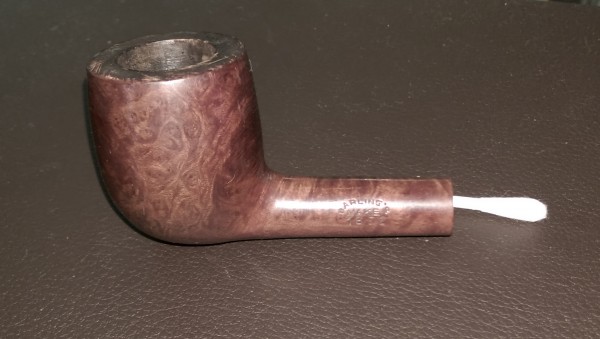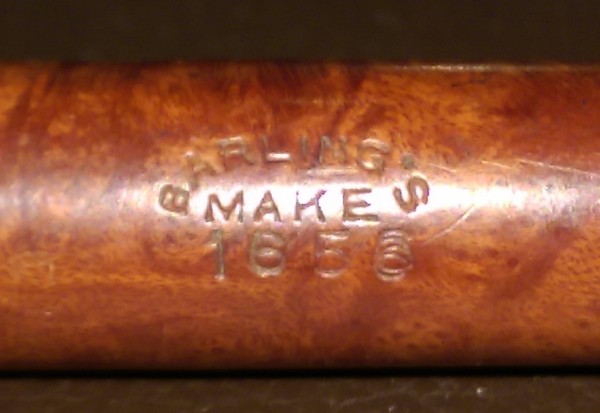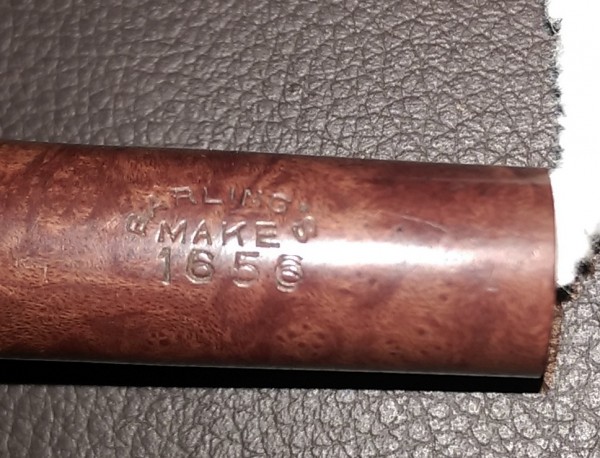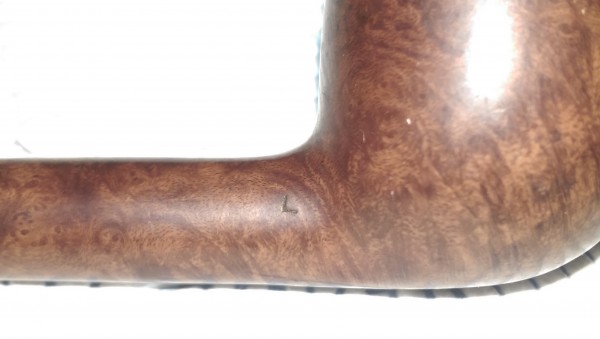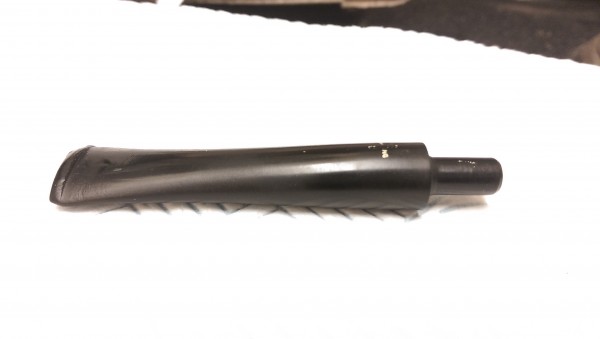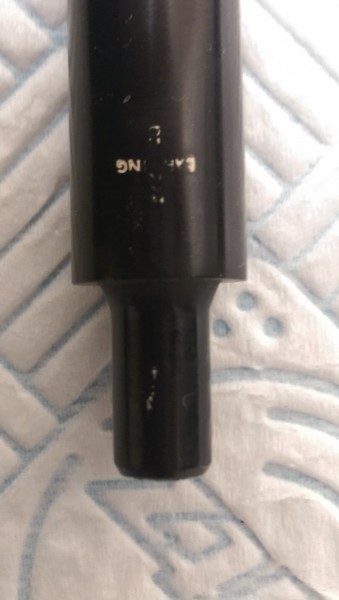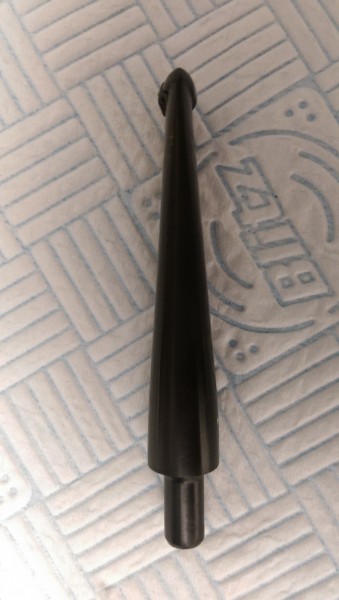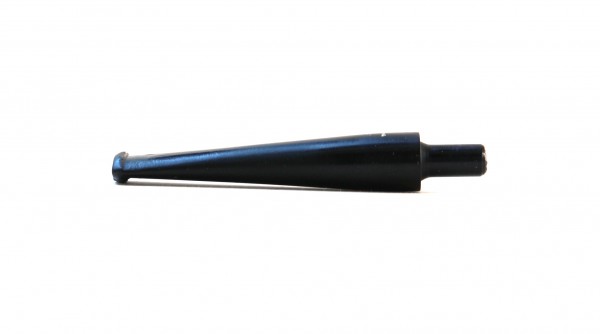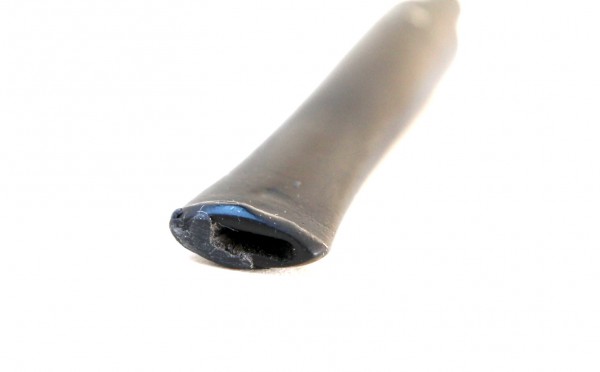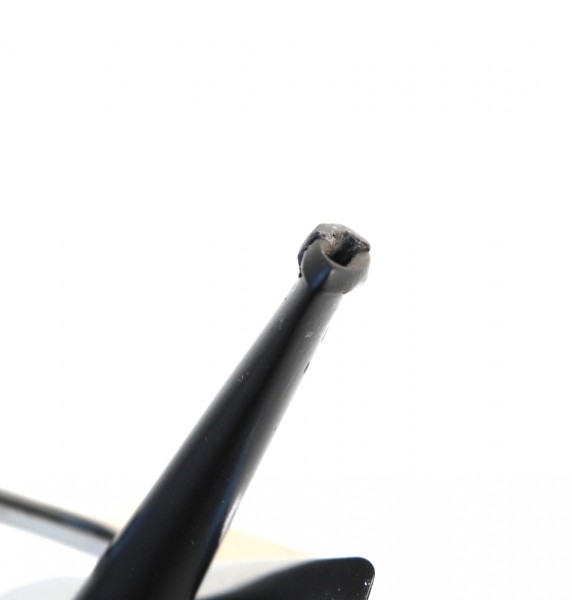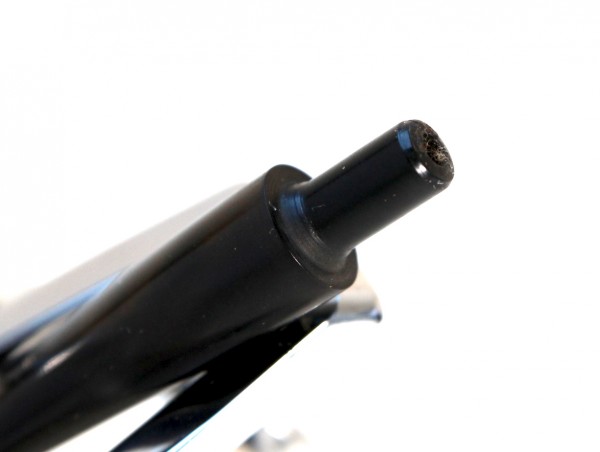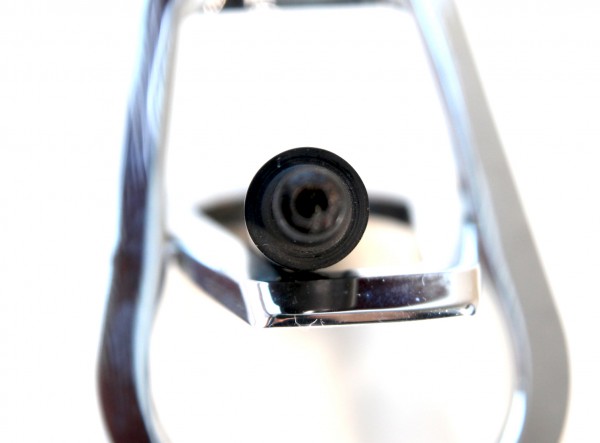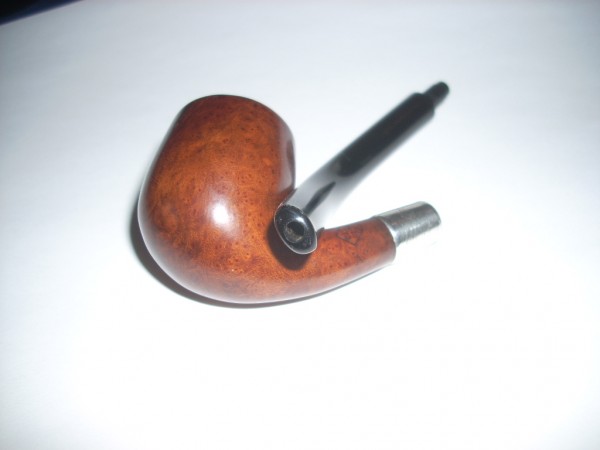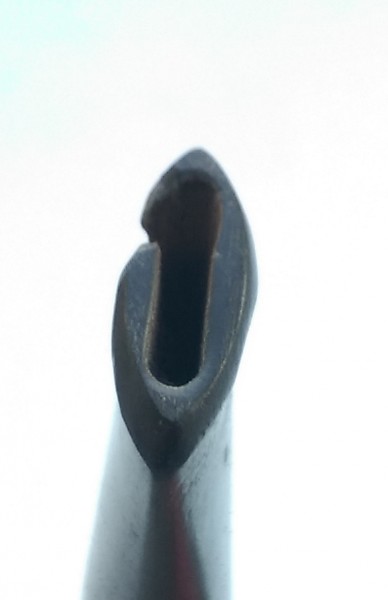Hello all. So what the slot tells me is that this stem is the design that was patented in 1936. The slot is lozenge shaped with straight top and bottom sides and semi-circular east/west sides. Earlier semi-orific slots retain a very slight curve top and bottom. The guy that owned this pipe was a real chomper, wasn't he?
As for dating, there's no way to do so with complete assurance, but I'll share my thoughts.
The "Barling's Make" shank logo stem is of a type that is seen sporadically and which I can say with confidence dates as far back as the 1920's. What sets this logo apart from the others is the combination of a shallow curve to the arched "Barling's" combined with such extreme angling at the end, such that the "B" in Barling's is nearly horizontal, more so than the "S" that bookends it. The word "Make" is nestled under this somewhat clumsy looking arch. The other stamps of the period do not exhibit the same level of rotation of the letters.
The model stamp indicates that the pipe was made for the domestic or European market as it is a 4 digit number whose first digit is a "1". Barling almost never stamped model numbers on their pipes until after the second World War. But there were a couple of periods when they did, starting in the mid 1920's and for a few years thereafter, and sporadically in the late '30's and sporadically during the War. My guess is that this initial change in their stamping practice is related to Barling's decision to re-enter the US market in the mid 1920's, and their decision to revise their model number system. Like everything else Barling, there are no absolutes. So while they created two distinctly different number systems in the mid 1920's they also kept a lot of existing model numbers unchanged, while changing others. It's kind of a mess to figure out.
So this stummel could be as old as the late 1920s since it could have been struck with both this particular "Barling's Make" stamp and been stamped with a model number at that time.
But then there's that damned stem. The stem is much newer than the 1920's. This is the stem that was patented in the mid 1930's, which continued to be in use for the next 30+ years. Even with a patented design, Barling stems show a lot of variation, especially around the tenon, many of which are stepped, like tenons designed for holding a stinger. Brrrrr...I'm not opening up THAT kettle of worms. This particular stem looks like a genuine Barling stem. The chamfer at the base of the tenon, the slightly counter clocked crossed Barling's stem logo, and the shaping of the button and slot all point to that.
So there are two basic possibilities, and endless permutations.
The first is that this is a 1920's stummel with a replacement Barling made stem. That's a very possible scenario. Barling kept a department for the refurbishment, maintenance, and repair of their pipes. I would also expect that a great many of their clientele would have had their stems redone in the newer style. It's a no brainer to consider that a possibility. And given that at least one owner was a slob chomper, the "originalness" of the stem is questionable.
In point of fact, the "originalness" of any vintage estate pipe's stem is suspect.
The second possibility is that the stem is the original one, in which case the pipe dates from roughly 1935-1962. It's possible that this odd logo stamp from the 1920's was used at other times but I have nothing yet that can verify this. Barling used several logo stamps simultaneously, but generally these can be assigned to a period of time.
The lack of a COM or TVF stamp suggests an earlier dating. But remember that this was graded a standard, not a YOW or higher, so a TVF stamp wouldn't have been applied. And Barling was so indifferent about their stamping, with the exception of their shank logo stamp, that the COM stamp gets left off from time to time. Dating just on the basis of a paucity of stamps is a little iffy. If the pipe was covered in stampings it would be post WW2. Lots of stampings helps with dating. For example, the TVF stamp is used a lot after WW2.
My own inclination is to go with the late 1920's model stamp and size stamp and all, with a Barling made replacement stem. But it could be a later pipe with its much maligned and long suffering original stem. There's no knowing for sure.
